
HaRMFUL Algae Blooms (HABS)
We continually update this article on Harmful Algae Blooms (HABs) to provide you with as much information as we can.
Table of contents
CLA IniTiatives
What is a HAB?
DANGER AND PRECAUTIONS
Identification (and MIsIDENTIFICATION)
Research & Resources
CLA INITIATIVES
It all begins with an idea. Maybe you want to launch a business. Maybe you want to turn a hobby into something more. Or maybe you have a creative project to share with the world. Whatever it is, the way you tell your story online can make all the difference. Don’t worry about sounding professional. Sound like you. There are over 1.5 billion websites out there, but your story is what’s going to separate this one from the rest. If you read the words back and don’t hear your own voice in your head, that’s a good sign you still have more work to do.
Some notes from the DEC/CDC concerning blooms in general:1) The duration of the bloom is variable, many times it can appear and disappear in hours or within a day. Other times it may last longer. They do not understand the reasons this happens.
2) Many times wave action due to wind can cause the bloom to disappear.
For instance, a couple of these blooms did not exist at 9 AM on the day that we sampled. By noon the blooms had formed. However later in the day a couple of the sites had cleared substantially and the water looked substantially clearer. We did not re-test the water at these locations.
3) The reason that dogs are particularly susceptible to being hurt by a HAB is because they tend to drink the water. The researchers say you must ingest the water to cause internal damage. Getting the water on you can cause skin/eye irritation.
4) Just because a bloom is in one location on the lake does not mean that the entire lake has a HAB and is affected.
5) According to the DEC, “in-home treatments such as boiling, disinfecting water with chlorine or ultraviolet (UV), and water filtration units do not protect people from HABs toxins”.
6) The Harmful Blooms tend to form on the surface of the water. Therefore, the DEC has a motto: “Know It, Avoid It, Report It”. A statement on the CDC website says “When In Doubt Stay Out”.
Identification (and MIsIDENTIFICATION)
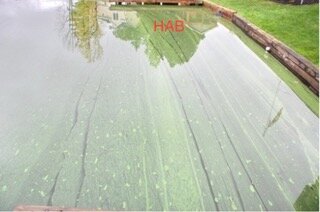
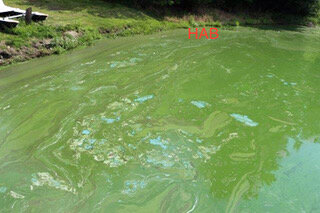
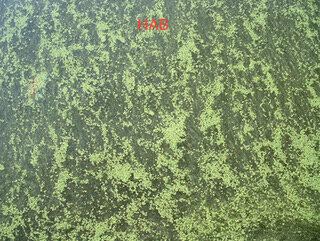
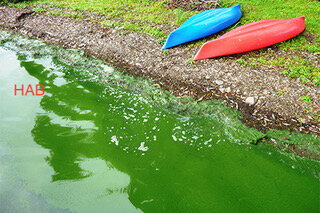
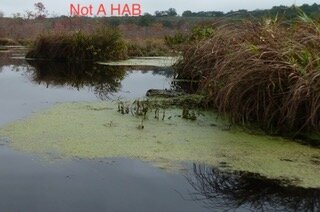
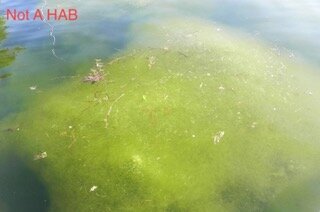
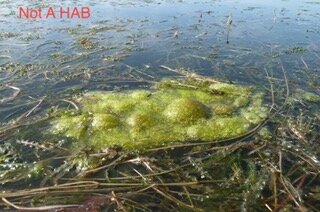
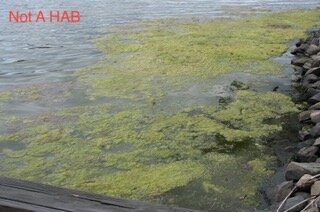
more information on HABS found at these websites.
https://www.dec.ny.gov/chemical/77118.html
https://www.cdc.gov/habs/be-aware-habs.html?CDC_AA_refVal=https%3A%2F%2Fwww.cdc.gov%2Ffeatures%2Fharmful-algal-blooms%2Findex.html